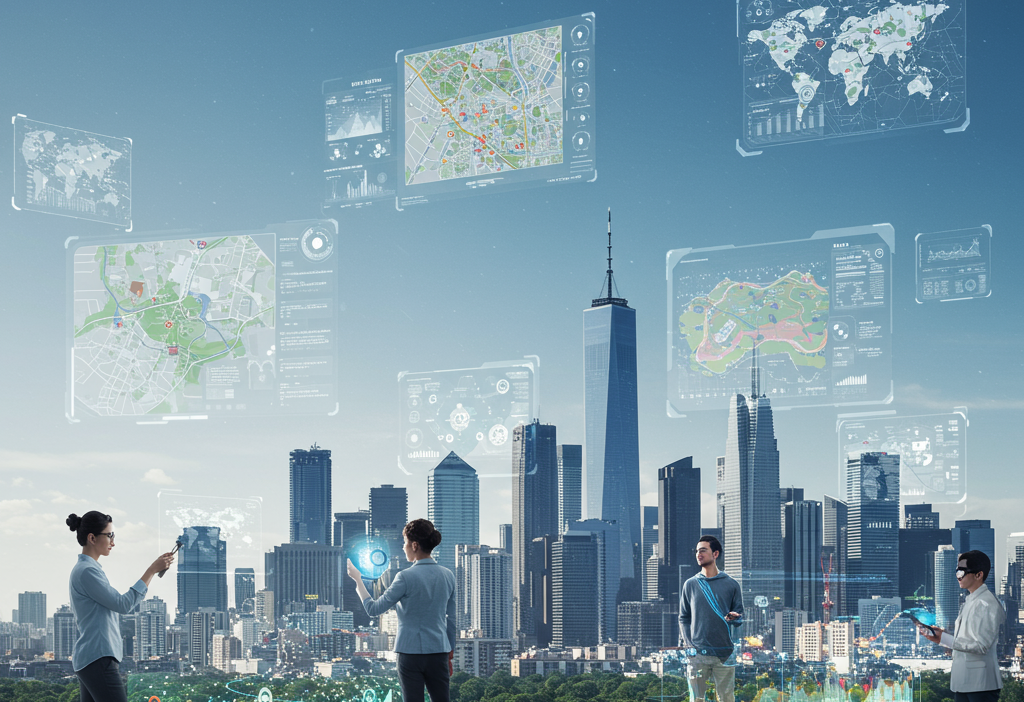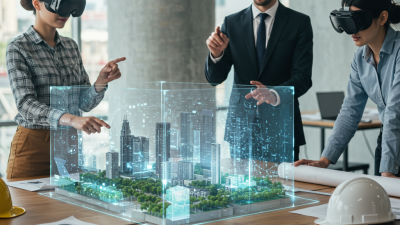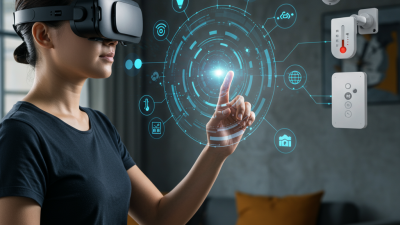As cities around the world strive for sustainability, efficiency, and citizen inclusivity, technology plays a pivotal role in shaping tomorrow’s urban environments. Augmented reality (AR) is emerging as a game-changer for smart cities, offering planners, engineers, and residents immersive tools to visualize, analyze, and co-create public spaces in real time. In this article, we explore how AR is revolutionizing urban planning and citizen engagement, examine real-world use cases, discuss benefits and challenges, and look ahead to future trends.
What Is AR in the Context of Smart Cities?

Augmented reality layers digital information—3D models, data feeds, annotations—onto the physical world. Unlike virtual reality, which creates a fully digital environment, AR enhances existing cityscapes through smartphones, tablets, smart glasses, or head-mounted displays. For smart city initiatives, AR can unlock new possibilities to:
- Visualize infrastructure projects before construction begins
- Overlay real-time sensor data (traffic, pollution, energy usage)
- Facilitate remote collaboration among architects, engineers, and officials
- Engage citizens through interactive planning workshops
Key Benefits of AR-Enabled Urban Planning
1. Enhanced Visualization
Traditional blueprints and 2D renderings can be abstract for non-technical stakeholders. AR brings plans to life by projecting 3D building designs, park layouts, or transit routes directly onto current sites. This clarity accelerates decision-making and reduces costly revisions later in the process.
2. Participatory Engagement
AR apps enable citizens to point their devices at a proposed plaza or bike lane and see the planned changes overlayed on their screen. They can submit feedback, vote on design options, or even sketch ideas in situ. This democratic approach fosters transparency and builds public trust.
3. Real-Time Data Integration
Smart city sensors—monitoring air quality, traffic density, noise levels—feed live data into AR visualizations. Planners can identify congestion hotspots, predict pollution trends, or optimize energy consumption in public buildings with an intuitive, geo-anchored interface.
4. Cost and Time Savings
By detecting design clashes early and enabling virtual site walk-throughs, AR reduces the need for physical mockups and multiple on-site visits. Projects stay on schedule and within budget, freeing resources for other community priorities.
Real-World Use Cases
Smart Dubai’s Virtual City Model
The Smart Dubai initiative created an AR app that overlays Dubai’s 3D city model onto actual streets. Residents and tourists can explore upcoming developments, traffic updates, and cultural landmarks. Planners use the same platform to test road expansions and green space allocations in context.
Helsinki’s Citizen-Centric Workshops
In Helsinki, AR stations in public libraries allow citizens to review proposed parking regulations and building guidelines. Users wear headsets to place virtual structures on physical lots, instantly grasping the scale and sightlines. Their feedback directly informs municipal zoning decisions.
Sidewalk Labs’ Waterfront Redevelopment
At Toronto’s Quayside project, Sidewalk Labs tested AR visualization tools for sustainable design workflows. Stakeholders could simulate pedestrian flows, test daylight access, and experiment with modular street furniture, all through a tablet-based AR interface.
Challenges and Considerations
1. Data Privacy and Security
AR systems often require geolocation and camera access, raising privacy concerns. Cities must enforce strict data governance policies, anonymize user inputs, and store sensitive infrastructure plans in secure environments.
2. Technical Infrastructure
High-precision AR demands accurate mapping, reliable 5G or Wi-Fi connectivity, and up-to-date digital twins of city assets. Legacy systems may need upgrades to support seamless AR experiences.
3. Digital Divide
Not all residents have access to AR-capable devices, risking exclusion of lower-income or elderly populations. Municipalities can address this by deploying AR kiosks, lending programs, or community workshops to ensure broad participation.
Future Trends

1. Immersive Digital Twins
Next-generation digital twins will combine AR with real-time IoT feeds, AI-driven simulations, and predictive analytics. Urban managers could foresee traffic snarls before they happen or optimize emergency response routes on the fly.
2. Wearable AR and Smart Glasses
As head-mounted displays become lighter and more affordable, planners and citizens will enjoy hands-free AR interactions. On-site construction crews can follow step-by-step holographic instructions, reducing errors and training time.
3. Mixed Reality Collaboration
By blending AR with real-time holographic telepresence, remote experts can join on-site meetings as lifelike avatars. Cross-disciplinary teams across continents will iterate on designs together, speeding up innovation cycles.
4. Gamified Urban Planning
Some cities are exploring AR games that let residents earn points by reporting infrastructure issues or proposing green initiatives. Gamification boosts engagement, turning civic participation into an interactive, rewarding experience.
Conclusion
Augmented reality is more than a flashy demo—it’s a practical, cost-effective tool for creating more transparent, inclusive, and resilient cities. By visualizing future developments in situ, integrating live data, and empowering citizens to shape their surroundings, AR paves the way for smarter urban ecosystems. As technical infrastructures mature and privacy safeguards strengthen, the potential for AR-driven smart cities will only continue to expand, building a bridge between digital innovation and everyday life.





